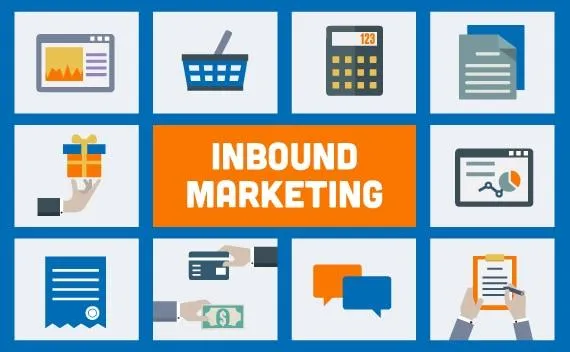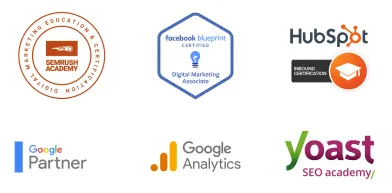TO LEARN IS TO GROW
Learning Center
We do our research and publish our results. Should probably call this the Growing Center.


What is Inbound Marketing?
Boosting your online presence and brand awareness with customer-centric strategies
Did you know that according to recent marketing research, when it comes to interacting with businesses, 91% of people unsubscribe to business email lists, 86% of people skip the ads on television, and that 200 million people are on the Do Not Call List?
More than likely you’re already well aware of the fact that the age of cold-calling and forcing advertisements in the faces of customers is long gone, and that the ways in which your customers read and hear about your brand have changed. But what does this mean when it comes to reaching out and connecting with your customers and providing them with valuable information that they need?
Enter, Inbound Marketing!
The data driven wisdom and methodology behind the approach to marketing that is known as Inbound Marketing, is based on the idea that the customer should be the focus of the buying process, not the seller or the product itself. Inbound Marketing is all about earning the trust of your buyer by providing them with helpful and valuable information that they love to receive, instead of bombarding them with a sales pitch that they aren’t ready or looking for.
Old versus New: How is Inbound Marketing different?
Now with the traditional way of marketing, we used to send cold calls, cold emails, and interruptive ads, a strategy that was primarily marketer-centric. The difference between Inbound Marketing and the traditional style of marketing is this: Inbound Marketing is all about the customer, their needs, their problems, and their goals, and ultimately, how you and your business can help them.
A question you may be asking yourself now is likely along the lines of, “so how does this whole Inbound Marketing thing work anyway?” Well, if you’re like most business leaders and managers you may not know where or how to start when it comes to building an online presence for your brand. This is one of the most common problems that small and medium sized businesses are up against in the digital age, and the Inbound Marketing methodology is helping people just like you address this issue with a new successful strategy revolving around content.
How is content related to Inbound Marketing?
There is in fact a way to attract just the right audience to your site, build awareness of your brand and convert leads into sales; all using the Inbound methodology and what is often referred to as the currency of the Internet, or content. What you are reading now, and anything you read or consume from the internet is considered content, and content marketing is one of the main ways that businesses communicate with their target audiences.
Value of content is in the education
The goal when creating great content for your customers, whether a social media post, email, blog, or eBook, is to engage your customer in a way that educates them on something they care about, so much so they are motivated to share that content with someone in their network. When you delight your customers with consistent and quality content that prompts them to share information about you to their friends, those customers then become valuable promoters of your brand.
Inbound Marketing: Not just for the tech geniuses!
Transitioning a business from a traditional marketing strategy to the Inbound Marketing methodology isn’t as overwhelming as it may sound, and even if social media platforms have not been your area of expertise in terms of promoting your business, Inbound Marketing can be implemented by any marketing or sales team, in any industry, and with any level of technical experience. Remember that with consistent publishing of valuable content that delights your customers, your business can meet and exceed all your traffic and conversion goals, as well as your overall online presence as a brand!

What is Inbound Marketing?
Boosting your online presence and brand awareness with customer-centric strategies
Did you know that according to recent marketing research, when it comes to interacting with businesses, 91% of people unsubscribe to business email lists, 86% of people skip the ads on television, and that 200 million people are on the Do Not Call List?
More than likely you’re already well aware of the fact that the age of cold-calling and forcing advertisements in the faces of customers is long gone, and that the ways in which your customers read and hear about your brand have changed. But what does this mean when it comes to reaching out and connecting with your customers and providing them with valuable information that they need?
Enter, Inbound Marketing!
The data driven wisdom and methodology behind the approach to marketing that is known as Inbound Marketing, is based on the idea that the customer should be the focus of the buying process, not the seller or the product itself. Inbound Marketing is all about earning the trust of your buyer by providing them with helpful and valuable information that they love to receive, instead of bombarding them with a sales pitch that they aren’t ready or looking for.
Old versus New: How is Inbound Marketing different?
Now with the traditional way of marketing, we used to send cold calls, cold emails, and interruptive ads, a strategy that was primarily marketer-centric. The difference between Inbound Marketing and the traditional style of marketing is this: Inbound Marketing is all about the customer, their needs, their problems, and their goals, and ultimately, how you and your business can help them.
A question you may be asking yourself now is likely along the lines of, “so how does this whole Inbound Marketing thing work anyway?” Well, if you’re like most business leaders and managers you may not know where or how to start when it comes to building an online presence for your brand. This is one of the most common problems that small and medium sized businesses are up against in the digital age, and the Inbound Marketing methodology is helping people just like you address this issue with a new successful strategy revolving around content.
How is content related to Inbound Marketing?
There is in fact a way to attract just the right audience to your site, build awareness of your brand and convert leads into sales; all using the Inbound methodology and what is often referred to as the currency of the Internet, or content. What you are reading now, and anything you read or consume from the internet is considered content, and content marketing is one of the main ways that businesses communicate with their target audiences.
Value of content is in the education
The goal when creating great content for your customers, whether a social media post, email, blog, or eBook, is to engage your customer in a way that educates them on something they care about, so much so they are motivated to share that content with someone in their network. When you delight your customers with consistent and quality content that prompts them to share information about you to their friends, those customers then become valuable promoters of your brand.
Inbound Marketing: Not just for the tech geniuses!
Transitioning a business from a traditional marketing strategy to the Inbound Marketing methodology isn’t as overwhelming as it may sound, and even if social media platforms have not been your area of expertise in terms of promoting your business, Inbound Marketing can be implemented by any marketing or sales team, in any industry, and with any level of technical experience. Remember that with consistent publishing of valuable content that delights your customers, your business can meet and exceed all your traffic and conversion goals, as well as your overall online presence as a brand!
Growing Businesses Since 2008
We have helped hundreds of businesses just like yours. Working for or along-side of business owner, managers, staff, or even board of directors, LOJO is ready to be an asset to your business.
Our team has been curated through the years for individual skills, personalities, and capabilities. Our clients put their trust in us to help them grow. We are here to do just that.



Growing Businesses Since 2008
We have helped hundreds of businesses just like yours. Working for or along-side of business owner, managers, staff, or even board of directors, LOJO is ready to be an asset to your business.
Our team has been curated through the years for individual skills, personalities, and capabilities. Our clients put their trust in us to help them grow. We are here to do just that.




Matthew Rogers, President
iProspect Check
After spending several months reviewing multiple proposals from several different companies we engaged LOJO to develop a new website that represents our company effectively. We worked initially with Stephen Platte who helped create the scope of the project. Stephen was knowledgeable and always followed up with me on time and as promised.
He "closed the deal" for LOJO with his professionalism, service orientation and easy going approach. Once we signed the contract we were introduced to Jay Kelly who would be the creative lead for LOJO. This was the most challenging part of the project for my company, as there was no shortage of ideas from our side. Jay managed the project flawlessly, and once we had all agreed to the design, Jay introduced us to Eric.
Eric Lay is one of the founders of LOJO. Eric took the design we had developed and brought it to life. We delivered content as quickly as he requested it. Eric kept the project on task and we responded by exceeding every deadline for content. In turn, once provided, literally not a day went by that Eric didn't add the content and take the next step. In just a few weeks we launched our new website. Eric is a pleasure to work with.
His positive attitude and consultative approach really enhanced the experience and made a big difference for us in the outcome of our project. We would welcome you to visit our website to take a look at the quality work of LOJO. We are very pleased with LOJO and look forward to working with them in the future as we pursue an aggressive SEO strategy."
After spending several months reviewing multiple proposals from several different companies we engaged LOJO to develop a new website that represents our company effectively. We worked initially with Stephen Platte who helped create the scope of the project. Stephen was knowledgeable and always followed up with me on time and as promised.
He "closed the deal" for LOJO with his professionalism, service orientation and easy going approach. Once we signed the contract we were introduced to Jay Kelly who would be the creative lead for LOJO. This was the most challenging part of the project for my company, as there was no shortage of ideas from our side. Jay managed the project flawlessly, and once we had all agreed to the design, Jay introduced us to Eric.
Eric Lay is one of the founders of LOJO. Eric took the design we had developed and brought it to life. We delivered content as quickly as he requested it. Eric kept the project on task and we responded by exceeding every deadline for content. In turn, once provided, literally not a day went by that Eric didn't add the content and take the next step. In just a few weeks we launched our new website. Eric is a pleasure to work with.
His positive attitude and consultative approach really enhanced the experience and made a big difference for us in the outcome of our project. We would welcome you to visit our website to take a look at the quality work of LOJO. We are very pleased with LOJO and look forward to working with them in the future as we pursue an aggressive SEO strategy."

Matthew Rogers, President
iProspect Check
The team at LOJO were wonderful to work with. They are well organized and very patient as we worked through our marketing strategy and developed a well thought out and clear action plan at a reasonable price. We will definitely be back for our future campaign needs."

Jon Crosby, Founder
Dazil

